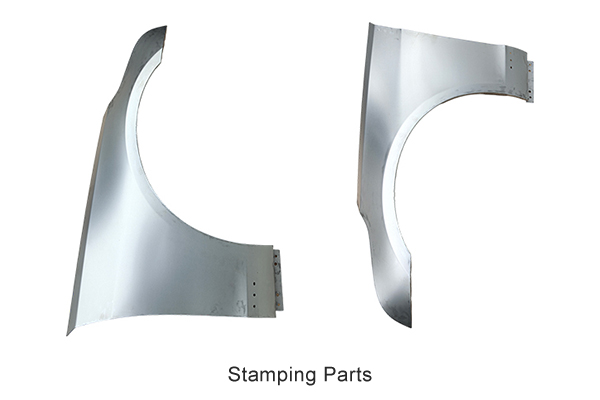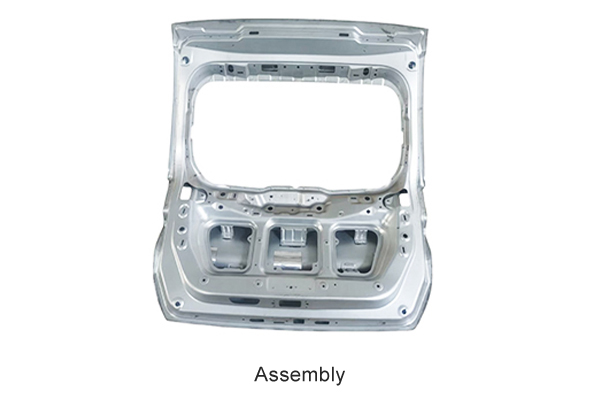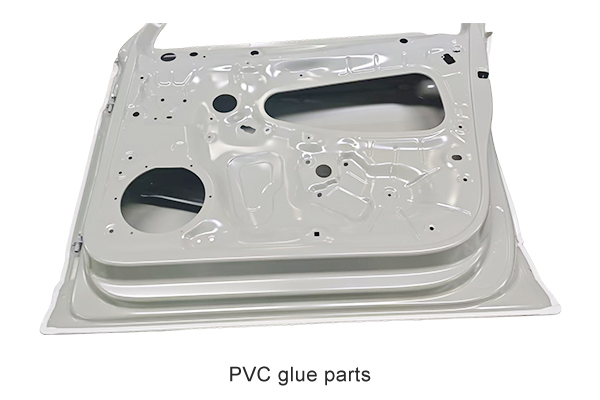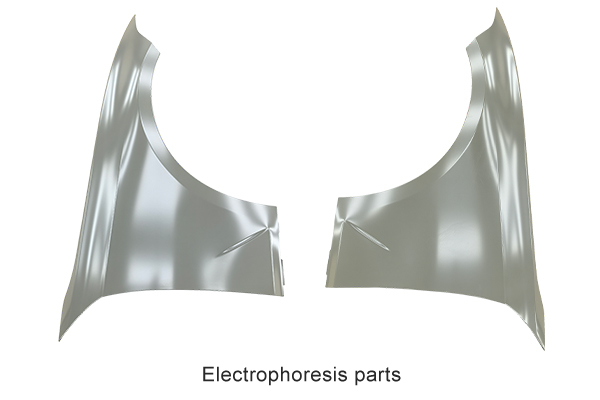Can hydraulic processing of autom cover improve the forming accuracy of complex curved surfaces and reduce dimensional deviation?
Release Time : 2025-08-14
The forming accuracy of complex curved surfaces on automotive body panels directly impacts the assembly quality and appearance of the vehicle body. Traditional stamping processes are prone to dimensional deviation when processing such structures. Hydraulic processing of autom covers, with its unique process advantages, can significantly improve the forming accuracy of complex curved surfaces, effectively reducing dimensional deviation and providing a reliable guarantee for high-quality vehicle body manufacturing.
Hydraulic processing of autom covers improves surface forming accuracy through uniform pressure transmission. Traditional stamping relies on rigid contact between dies and pressurization, which can easily cause uneven force distribution across complex curved surfaces, leading to localized overstretching or underforming. Hydraulic processing, on the other hand, uses a liquid medium to transmit pressure, ensuring uniform pressure across the entire surface of the sheet, especially in areas with large surface contours. The liquid adjusts pressure distribution in real time as the sheet deforms, ensuring that every area receives the appropriate forming force and avoiding dimensional deviation caused by uneven force.
Precise pressure control is the core advantage of hydraulic processing of autom covers in reducing dimensional deviation. The hydraulic system, equipped with high-precision pressure sensors and a closed-loop control system, can control processing pressure errors within ±1%. During the complex curved surface forming process, segmented pressure parameters can be programmed to meet the forming requirements of different curved areas, achieving gradient pressure adjustment from the edge to the center. This precise control ensures that sheet deformation remains within a controlled range, reducing dimensional deviations caused by pressure fluctuations.
The flexible forming characteristics of hydraulic processing of autom covers adapt to the changing needs of complex curved surfaces. Complex curved cover parts often contain multiple areas of varying curvature, making it difficult for traditional molds to fully conform to all curves. Hydraulic processing uses flexible die or liquid punch technology to allow the pressure medium to fully conform to the sheet surface, adaptively deforming with the surface shape, ensuring that every subtle curve is fully formed. This flexible contact avoids localized forced deformation caused by rigid molds and reduces dimensional deviations in the surface contour.
A real-time feedback control system further enhances the precision and stability of hydraulic processing of autom covers. During processing, laser displacement sensors monitor sheet deformation in real time. This data is fed back to the control system, enabling immediate adjustments to the hydraulic pressure and feed speed. When the formed dimensions of a local curved surface approach a deviation threshold, the system automatically optimizes the pressure parameters to correct the deformation trend. This dynamic adjustment capability effectively compensates for the impact of material property fluctuations and uneven thickness on precision, maintaining stable dimensional control.
Hydraulic processing of autom covers reduces the dimensional impact of die gaps. Traditional stamping die gaps must be set to match the average material thickness. Variations in sheet thickness across complex curved surfaces can exceed the gap adaptation range, leading to dimensional deviations. Hydraulic processing, however, automatically compensates for die gaps through liquid pressure. Regardless of sheet thickness variations, the pressure medium fills the gap and maintains stable pressure, ensuring that the finished surface dimensions are unaffected by gap fluctuations. This makes it particularly suitable for processing materials sensitive to thickness variations, such as high-strength steel.
Integrated molding reduces accumulated dimensional deviations across multiple processes. Traditionally, the processing of complex curved cover parts requires multiple stamping steps, and positioning errors in each step accumulate, leading to final dimensional deviations. Hydraulic processing of autom covers enables integrated molding of complex curved surfaces, reducing positioning errors caused by process transitions. Furthermore, single-shot molding avoids material fatigue and dimensional drift caused by multiple stretching operations, ensuring that the surface contour dimensions are closer to the designed value and significantly reducing accumulated deviations.
Long-term process stability ensures the consistent precision of hydraulic processing of autom covers. The hydraulic system's pressure output stability surpasses that of mechanical stamping. Combined with regularly calibrated pressure testing equipment, this system ensures consistent processing pressure parameters across batches of panels. In mass production, this stability keeps the dimensional deviation of each panel's complex curved surface within 0.1mm, far below the tolerances of traditional processes. This provides high-precision foundational components for subsequent body assembly.








